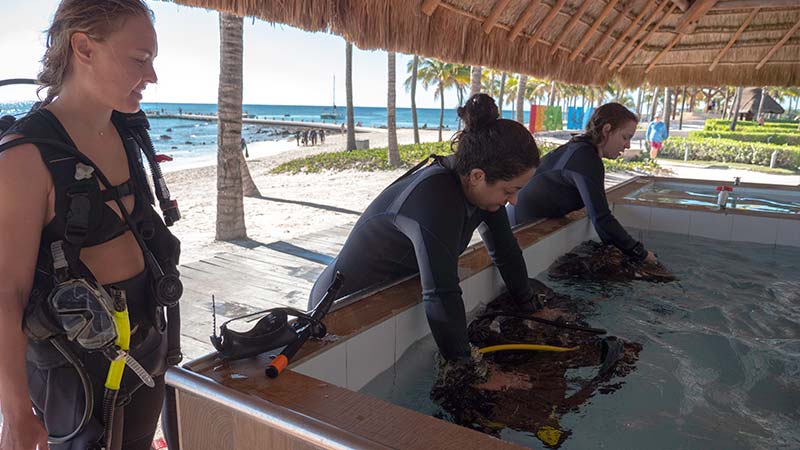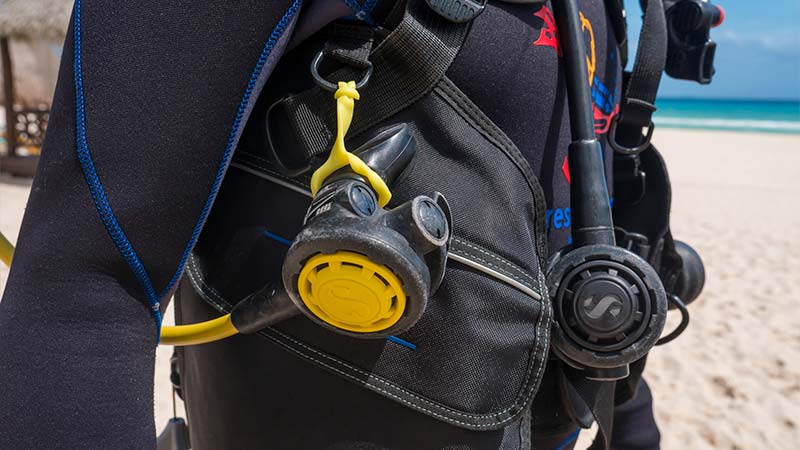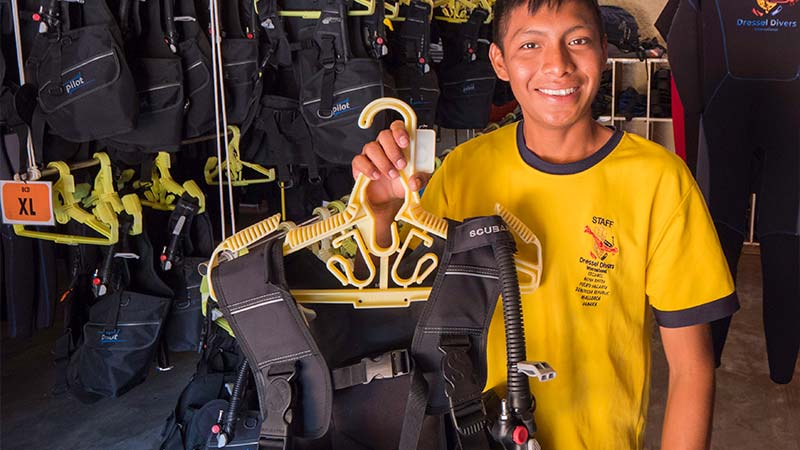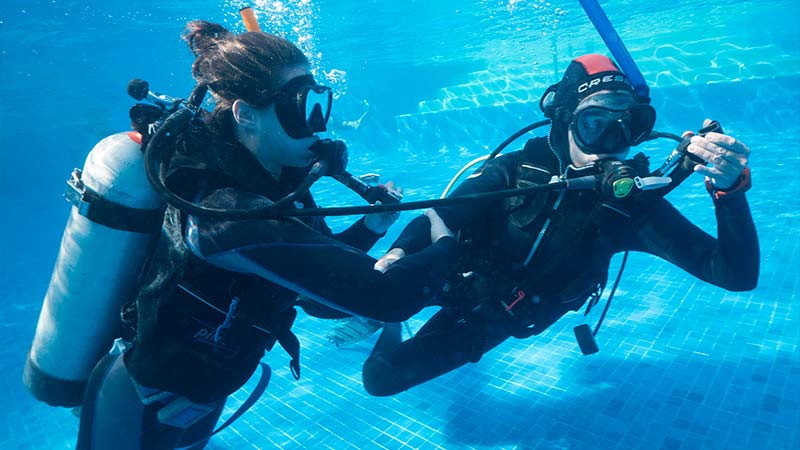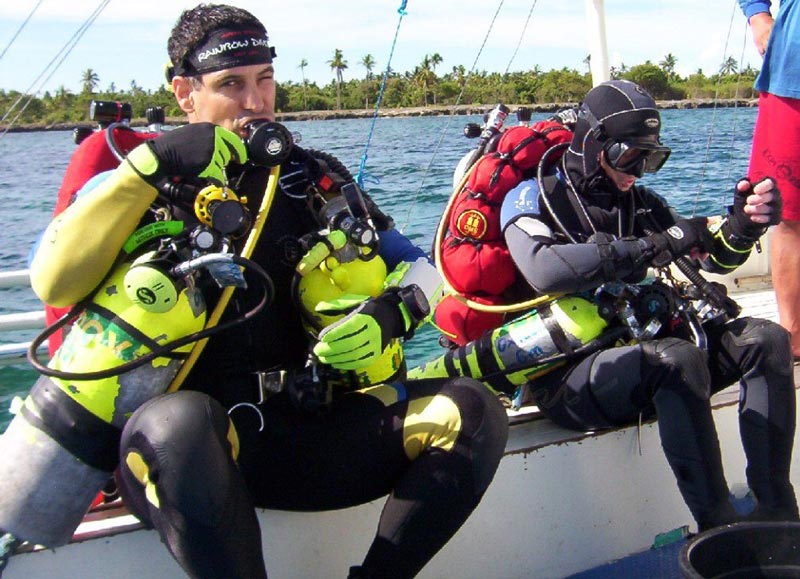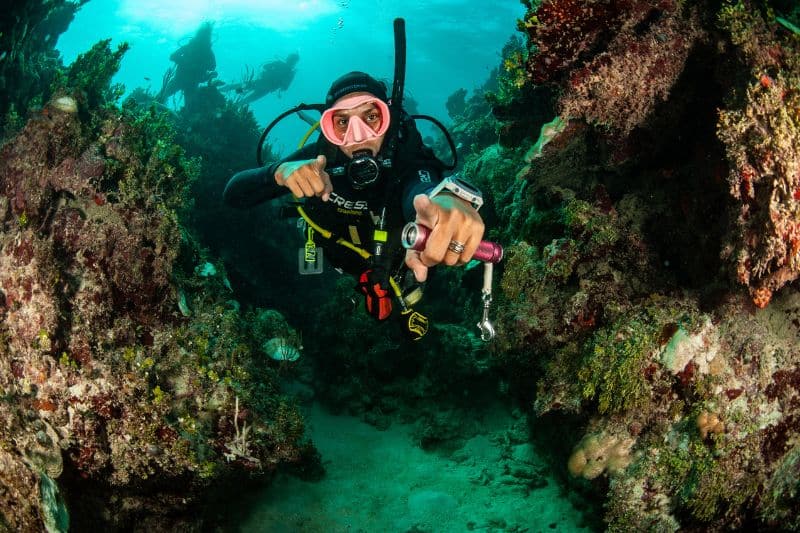5. What Should I Consider to Buy the Best Scuba BCD?
Buoyancy compensator size and comfort
When selecting your scuba diving BCD, it is important to prioritize size and comfort.
It’s crucial to find a scuba BCD that allows for movement freedom. So, it should not be too tight, as this could make it difficult to breathe when inflated.
When choosing between two sizes, consider the thickness of the suit you will be wearing, and opt for the larger size if necessary. Don’t worry, because adjustable straps on the chest, abdomen, and sides can help you achieve an optimal fit. Additionally, a comfortable ventral belt and easy-to-release buckles are important features to look for. Make sure also the part of the jacket that will be in contact with your back is padded to prevent any discomfort or pain.
Choose the BCD that best suits your shape. For example, Women’s BCD models are designed to prevent discomfort, particularly in the chest and lower back.
Diving BCD buoyancy capacity
When you’re looking for your perfect BCD, it’s important to consider the air volume it can hold.
Traditional buoyancy compensator gas capacity is closely linked with size.
Usually, buoyancy control devices designed for kids and teenagers are capable of holding 12-14 liters / 3.2-3.7 gal whereas those for individuals of medium stature (both women and men) have a capacity of 14-18 liters / 3.7-4.7 gal. On the other hand, larger-sized BCDs, such as those categorized as large and extra-large, are capable of containing 18-26 liters / 4.7-6.9 gal.
This is another reason why choosing the right size is essential. Since the bigger your buoyancy control device is, the more resistance it will oppose into the water, and the more difficulties you will have to move. The upward thrust will also be greater.
When we talk about recreational diving with standard equipment, the sizes of the diving BCDs are enough to provide the necessary lift. But what about technical diving loaded with cylinders and heavy equipment? What solution do we offer to those who dive in icy waters with dry suits? They will need a larger capacity scuba diving BC. They will need a wing BCD.
Technical divers must make elaborate calculations to decide the wing BCD size they need.
Usually, in recreational scuba diving, it is enough to use a positive buoyancy of 22-28lbs / 11-14kg.
If one is using a large single tank or light twin tanks, then medium wings weighing 30-32lbs / 15-16kg are suitable.
Finally, when double-cylinder diving, wing BCDs with a positive buoyancy ranging from 40-50lbs / 20-25kg are required to provide greater lift.
Diving BCD manufacturing materials
Diving BCDs are typically made from two different types of synthetic fabrics: nylon and Cordura.
Nylon scuba BCDs are usually lighter and cheaper, making them great for recreational diving.
On the other hand, Cordura dive BCDs are more durable and long-lasting, although they’re generally heavier and more expensive. These are ideal for instructors or professional divers who use them frequently.
Some models combine both materials. They are the most expensive ones because they are lightweight yet resistant.
To determine how much abrasion a dive BCD can withstand, check its “sanity rating.” The higher the number, the stronger the scuba diving BCD will be. So, if you’re looking for a BCD that can handle lots of wear and tear, choose one with a high sanity rating.
Additional buoyancy control device features
When choosing your perfect scuba diving BC, there are some additional features to keep in mind. Firstly, if you don’t want to use a weight belt, consider the integrated weight system and look for a BCD with pockets to store weights. Some classic models can carry up to 4.5 kg / 14. 7 lb. in each pocket.
Another useful feature is D-rings, which allow you to attach accessories. If you carry a lot of gear and want easy access to it, look for a multi-ring scuba BCD. Stainless steel rings are the best, as they’re more durable.
Pockets for small accessories like flashlights, knives, or spare masks can come in handy. Though, If you prefer to have the front of your buoyancy compensator clear, avoid models with large pockets.
In addition to the two main ones and the upper safety strap, some diving jackets have an extra fixing strap. It is particularly useful if you’re diving with longer aluminum tanks.
Another feature to consider is an integrated trachea. This option makes it easier and more comfortable to control the air inlet and outlet of the jacket, although it may come at a slightly higher price. Check that the trachea has inflation and deflation buttons that are easy to operate with your left hand, and consider its length for maximum convenience.
Lastly, a scuba diving BC with multiple relief valves is great because it allows you to adjust buoyancy without changing your swimming position.
By keeping these features pros and cons in mind, you’ll be able to find the perfect diving BCD for you!




